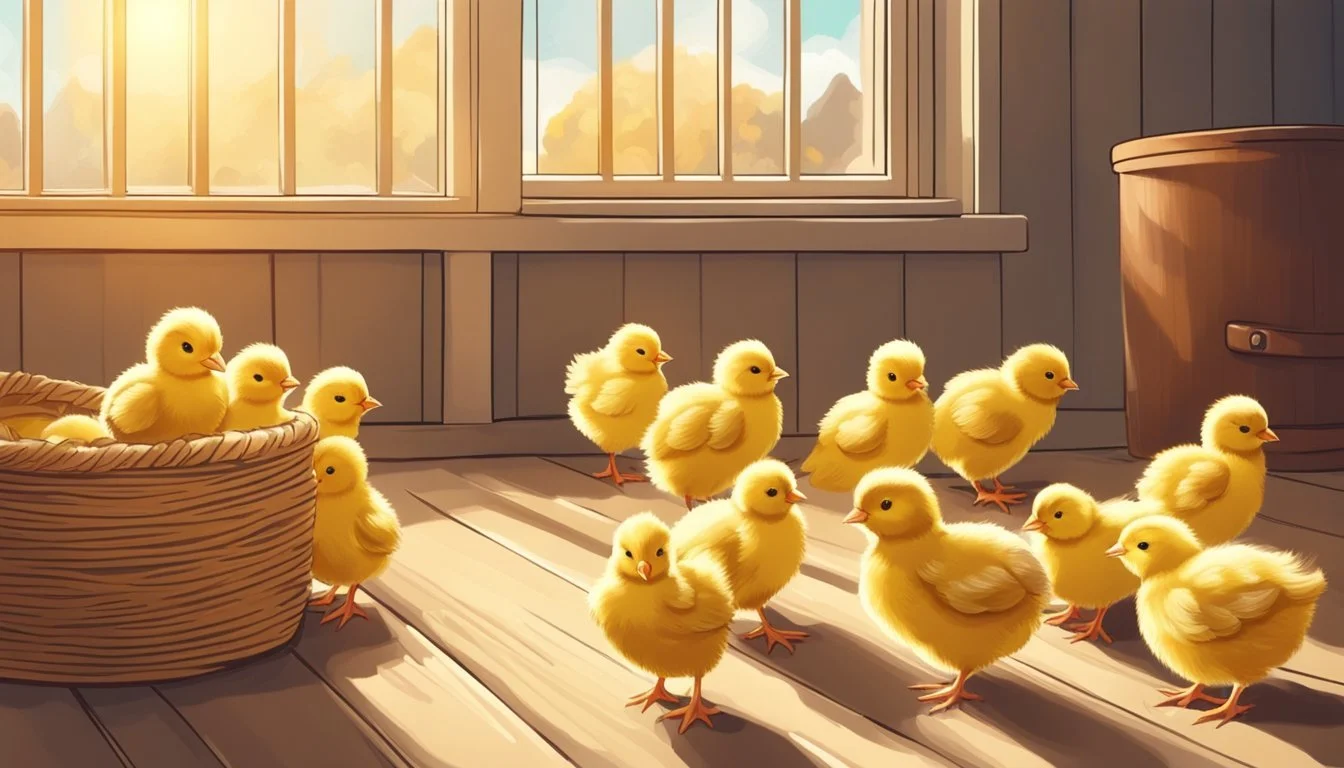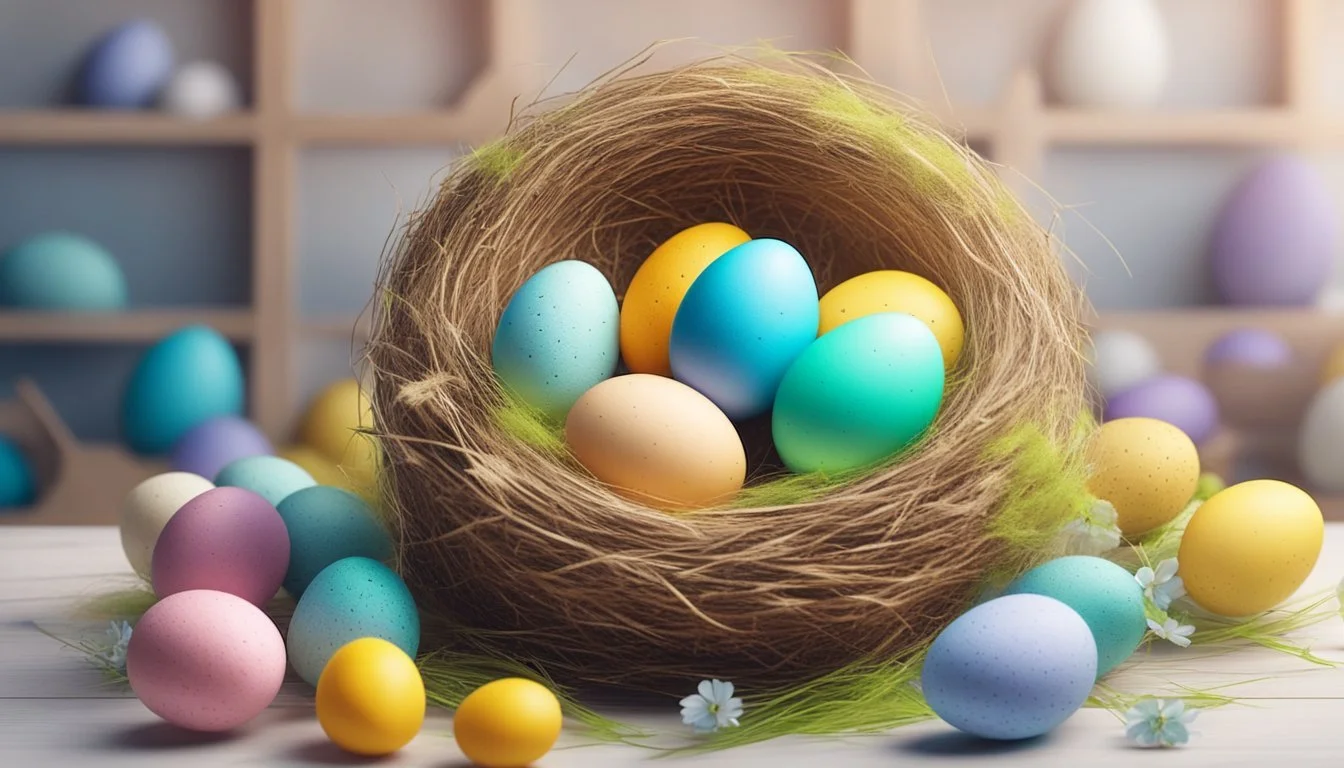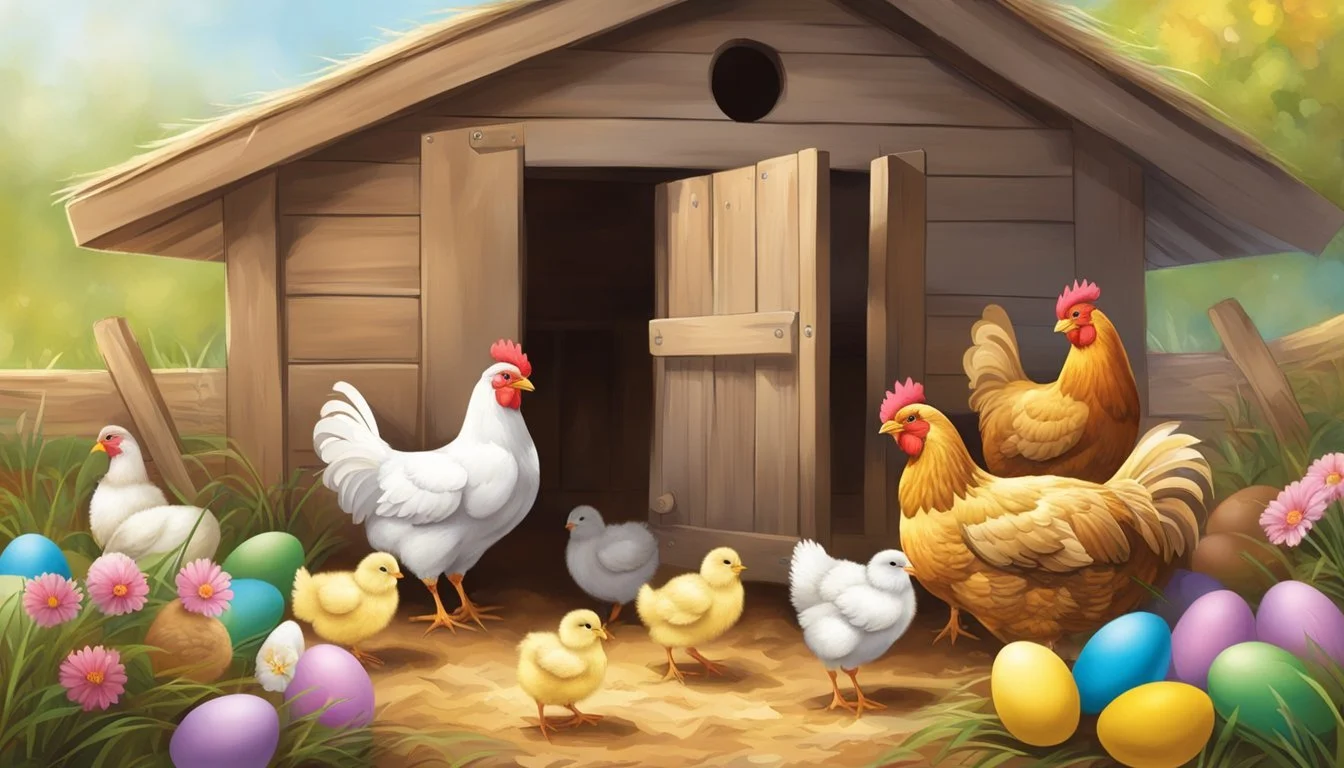Raising Chicks
An Easter Tradition and its Impact on Animal Welfare
Easter marks a season of renewal and life, celebrated in various cultures around the world. Among the many traditions associated with this holiday, raising chicks has become a favorite for families and farming enthusiasts. This tradition not only connects individuals to the agricultural roots of Easter but also teaches valuable life lessons about care and responsibility. With the right preparation and knowledge, raising chicks can be a rewarding experience that enhances the festive spirit of the season.
Chicks, with their promise of growth and development, are symbolic of the new beginnings that Easter represents. Many people choose this time to start raising young poultry, which often includes Easter Egger chickens, known for their colorful egg production. These chickens are particularly favored for their friendly demeanor and the variety they bring to egg baskets with hues of blue, pink, and green. As families gather to celebrate Easter, the presence of these vibrant eggs and the chicks that produce them add a lively and educational element to the festivities.
When it comes to raising chicks during Easter, aspiring poultry keepers should focus on providing the appropriate care for their health and well-being. A diet rich in protein is essential for their growth, starting with a higher percentage for chicks and gradually adjusting as they mature. Additionally, understanding the basics of shelter, temperature control, and protection against predators is crucial. This ensures that the chicks grow into healthy adult chickens, contributing to the cycle of life that Easter so poignantly symbolizes.
The Significance of Easter Traditions
Easter traditions often blend religious significance with cultural festivities. At the heart of these customs are symbols, such as eggs and chicks, that represent new life, hope, and the coming of spring.
Easter and Egg Symbolism
Eggs are central to Easter celebrations and they hold great symbolic weight. Representing new life and resurrection, eggs are linked to the Easter story and its message of hope. In Europe and Russia, eggs are dyed green to symbolize the greenery of spring. During Lent, eggs were historically avoided, which made their presence on Easter particularly meaningful.
Cultural History of Easter Egg Hunts
Easter egg hunts are a time-honored tradition where children search for hidden eggs, representing the pursuit of understanding. This fun activity has roots in Europe, with some tales suggesting that the Easter bunny initially brought eggs to gardens for children to find. Egg hunts are now a staple of Easter, fostering family bonding and the shared joy of discovery.
Raising Easter Chicks as a Holiday Activity
The practice of raising chicks during the Easter season extends the theme of new beginnings. It offers families an interactive way to engage with the symbolism of Easter. Chicks symbolize fertility and the continuation of life, mirroring the cycle of rebirth celebrated during this time. Engaging in the care of chicks during Easter reinforces the values of nurturing and growth inherent in family traditions.
Choosing the Right Chick
When embarking on the tradition of raising chicks for Easter, the factors to consider are manifold, including the breed's suitability for egg-laying and the aesthetic value of colorful eggs.
Considering Chicken Breeds for Easter
Easter Egger chickens are a popular choice for an Easter-focused poultry project due to their varied egg colors and friendly demeanor. Not a true breed but a hybrid, Easter Eggers can lay blue, green, pink, and yellow eggs, adding a festive touch to the holiday. When selecting a breed, potential owners should consider the bird's size and temperament, as well as the desired egg color. While similar breeds like the Araucana and Ameraucana are known for their blue eggs and distinct physical features, Easter Eggers provide a wider range of egg colors and are generally hardy and adaptable.
Breed Egg Color Size Temperament Easter Egger Varied Medium Friendly Araucana Blue Varies Variable Ameraucana Blue Medium Docile
The adaptability of Easter Eggers makes them suitable for various climates and environments, making them a strong contender for a family-friendly Easter experience.
Understanding Egg-Laying Capabilities
Easter Eggers are admired not only for their colorful eggs but also for their impressive egg production. They possess a gene that allows them to lay eggs in a myriad of hues—primarily shades of blue thanks to the egg gene they share with Araucanas and Ameraucanas. The frequency and consistency of egg-laying are influenced by factors like diet and overall health.
Protein-Rich Diet: A diet high in protein and essential nutrients supports optimal egg production.
Health and Care: Keeping chickens healthy through vaccinations, proper housing, and predator protection contributes to regular egg-laying.
This breed typically lays around 200-280 eggs per year, ensuring a steady supply of colorful eggs. By understanding the egg-laying capabilities of Easter Eggers, enthusiasts can better manage their expectations and optimize the care for their flock.
Caring for Chicks
Raising chicks requires meticulous attention to their living environment, dietary needs, and health management.
Creating the Proper Brooder Environment
At the onset of their lives, chicks need a secure and well-regulated brooder to thrive. Bedding is essential, typically a 4-inch layer of pine shavings, which provides both comfort and absorbs moisture. Newspapers placed over the shavings can initially help chicks locate their food, but should be removed gradually. To ensure comfort, a thermometer is vital to monitor the brooder's temperature, which should start at 95 degrees Fahrenheit and decrease by 5 degrees each week. Ample space is necessary to prevent overcrowding and a wire mesh cover may be used for security to keep predators at bay.
Temperature: Start at 95°F, decrease by 5°F weekly
Bedding: 4-inch pine shavings with newspaper layers on top
Security: Wire mesh cover to protect from predators
Feeding and Nutrition Essentials
Chicks require a balanced diet, with starter feed specifically formulated to provide high protein contents critical for early growth. To aid in digestion, chick grit should be available, especially if treats or scraps are given. Cleanliness is paramount, so the feeder must remain free from droppings and moisture. Fresh water should always be accessible through a clean waterer. Chicks should remain on starter feed until they are 8 weeks old.
Starter Feed: Rich in protein, mainstay of chick diet
Chick Grit: Offered to help digestion, especially with treats
Feeding Equipment: Feeder and waterer, kept clean at all times
Health and Growth Monitoring
Observant caretakers are crucial for ensuring healthy development. Vigilant monitoring for signs of distress or illness such as pasty butt, where feces block the vent, can prevent fatalities. Growth should be steady and consistent, signaled by increased activity and feather development. Regularly cleaning the brooder and providing adequate space can largely influence chick welfare. Maintaining a routine check on their environment and behavior enables early detection and response to potential health issues.
Routine Checks: Vents for pasty butt, consistent growth patterns
Clean Environment: Regular changing of bedding, maintenance of brooder cleanliness
Observant Care: Early identification and treatment of health issues
Egg Color Varieties and Genetics
When raising Easter Egger chickens for egg production, understanding the genetics behind egg coloring is essential, as these birds are celebrated for their ability to lay a spectrum of colored eggs, ranging from blue, green, to pink.
Genetics of Egg Coloring
The variety of egg colors seen in Easter Egger chickens is a direct result of the genetic interactions that affect the pigments deposited on the eggs. Easter Eggers are not a true breed, but rather a hybrid variety that carries the blue egg gene. This gene is known for creating eggs that have a blue or green-tinted shell. Here's a simplified breakdown of how the genetics influence the coloring:
Blue Eggs: A dominant gene known as Oocyanin deposits a blue pigment on the shell.
Green Eggs: When the blue egg gene is combined with genes for yellow or brown pigment, the resulting egg appears green.
Pink Eggs: Though less common, pink eggs can occur due to a slight variation in the pigmentation process.
Chocolate or Brown Eggs: Controlled by a different set of genes not typically present in Easter Eggers.
Identifying Easter Egger Chickens
Easter Egger chickens are characterized by their multi-colored eggs and diverse appearance. There is no set standard for Easter Eggers; they can display a range of feather colors and patterns. To identify them:
Look for hens producing blue, green, or pink eggs—an indicator of the blue egg gene.
Observe the earlobe color, as those with blue egg genes often have slate-colored earlobes.
Consider the variety in plumage, since Easter Eggers frequently showcase a mix of features from Araucanas, Ameraucanas, and other breeds with the blue egg gene.
Long-Term Care for Grown Chickens
Raising chickens transitions from careful brooding to meticulous long-term care as chicks mature into adults. The key to success lies in a well-designed coop, vigilant health management, and adept handling of egg production.
Coop Design and Nesting Considerations
Well-thought-out coop design significantly impacts the safety and comfort of adult chickens. Space allocation is critical – each chicken requires at least 2-3 square feet inside the coop and 8-10 square feet in an outdoor run. Ventilation is equally crucial to prevent respiratory issues, with the coop needing proper airflow while avoiding drafts directly on the birds. Nesting boxes should be cozy and filled with clean, dry bedding to encourage egg-laying. One box per 4-5 hens is sufficient, and boxes should be positioned away from the roosts to stay clean.
Maintaining Health and Welfare
Chickens need regular health checks to catch any signs of disease or parasites early. A balanced diet, clean water, and a clean environment are all crucial for the welfare of the birds. Adult chickens should have access to a feeder and a drinker at all times, which should be kept clean to prevent the spread of disease. Feather pecking can indicate stress or boredom, thus environmental enrichment and adequate space can help in mitigating behavioral problems.
Mature Egg-Laying Management
Egg production requires careful monitoring and support. Feeding layers a diet with 16-18% protein helps sustain egg production, alongside offering supplemental calcium sources like oyster shells to strengthen eggshells. Consistently collecting eggs encourages hens to keep laying and minimizes egg breakage and eating. Monitoring a hen's temperament and physical condition helps identify any changes that might affect egg-laying, allowing prompt intervention.
Breeding and Sustainability
Breeding chickens, specifically during festivities such as Easter, draws attention to the need for sustainable practices and the preservation of genetic diversity. This section explores the breeding process and its implications for sustainability, flock management, and legal considerations.
Understanding the Breeding Process
For a successful breeding program, one typically employs selective breeding techniques, such as pen breeding or pedigree breeding. Pen breeding involves placing a high-quality male with several females, usually not exceeding twelve hens per rooster to maintain a controlled environment. Pedigree breeding, on the other hand, pairs one male and one female to enhance specific traits in the offspring.
Ensuring a Sustainable Flock
Sustainability in poultry breeding entails maintaining a robust gene pool and healthy reproduction rates. This involves careful selection of birds for breeding based on vigor, health, and desirable characteristics. Sustainable practices may also include the rotation of breeding stock to avoid inbreeding and the responsible management of resources.
Managing a Mixed Breed Coop
Mixed breed chickens, like Easter Eggers, lay a variety of colored eggs which can be an attractive feature for small-scale breeders. Efficient management of a mixed breed coop requires understanding each breed's temperament and genetics to ensure a harmonious and productive flock.
Preserving Chicken Lineages
Heritage breeds, acknowledged by organizations such as the American Poultry Association, hold significant genetic and historical value. Lineage preservation involves breeding these heritage lines to maintain their genetic integrity and to prevent the loss of unique traits.
Chicken Breeds and Conservation Status
The conservation status of various chicken breeds varies, with some breeds considered critically endangered. Organizations like the American Poultry Association play a key role in monitoring and promoting the preservation of these breeds to ensure their persistence for future generations.
Legal and Ethical Considerations
Regulations governing poultry breeding practices ensure the welfare of the chickens involved. Breeders must stay informed of relevant legislation and ethical standards, including housing, feeding, and overall care, to ensure that their breeding practices meet these requirements.







